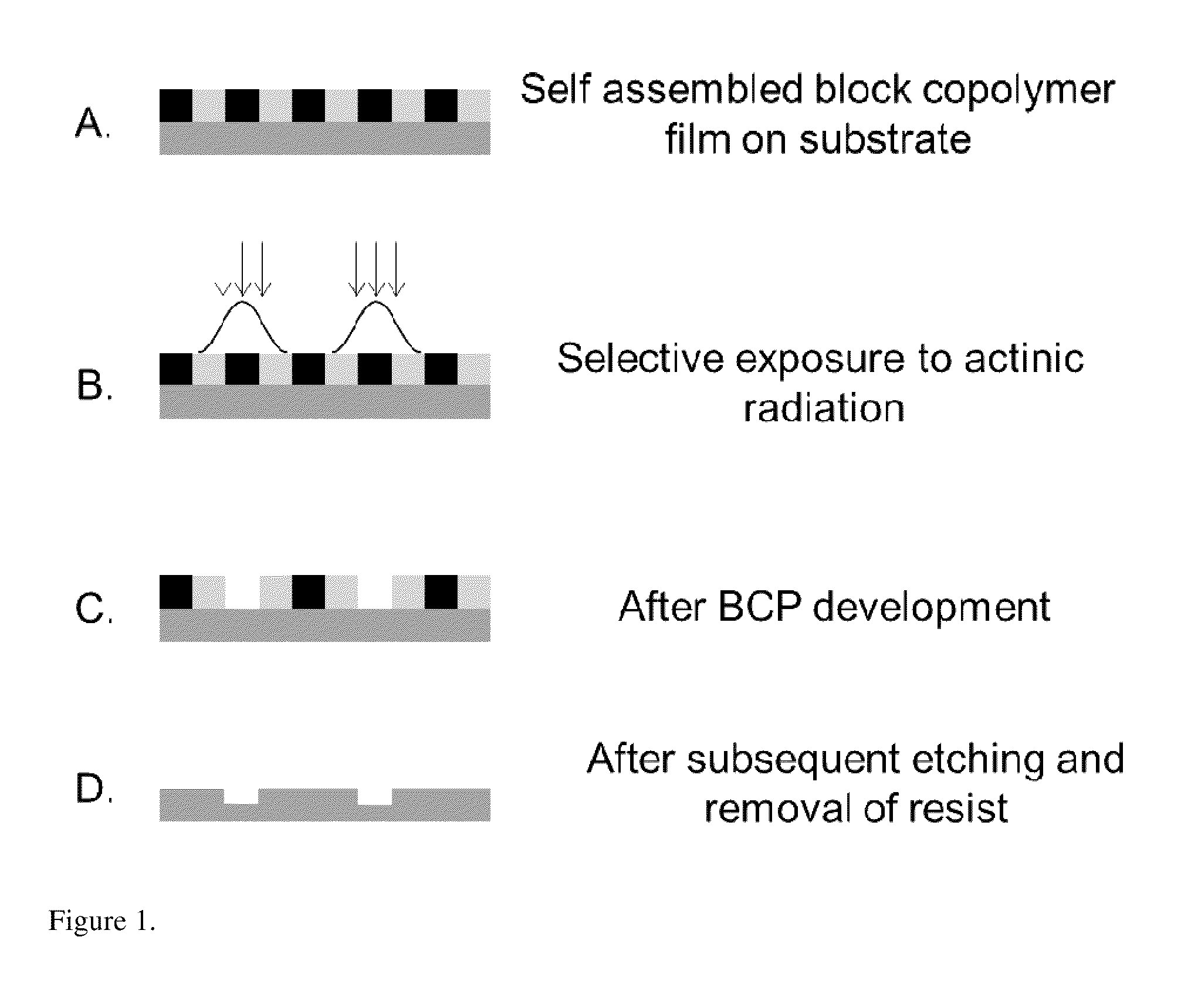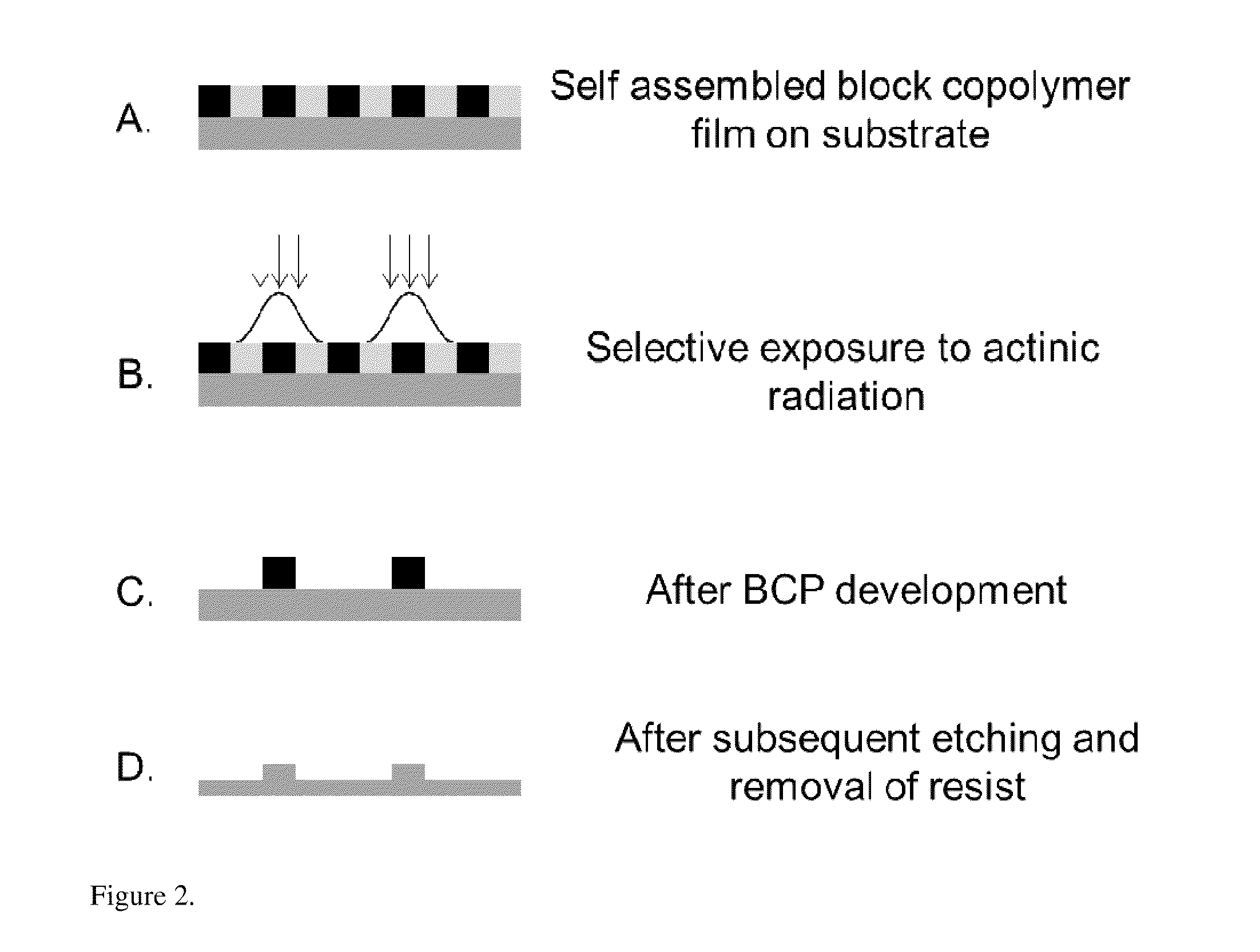Block co-polymer photoresist
- Summary
- Abstract
- Description
- Claims
- Application Information
AI Technical Summary
Benefits of technology
Problems solved by technology
Method used
Image
Examples
Embodiment Construction
Materials
[0024]One preferred exemplary illustrative non-limiting embodiment provides for a block copolymer photoresist that is a cleavable block copolymer, which can undergo self-assembly to create a pattern of phase separated domains on a substrate. The self-assembly process may be directed by graphoepitaxy or chemical epitaxy. The linker group, at which the cleavage of the block copolymer will take place may be a variety of chemical units including, but not limited to: an ortho-nitrobenzyl group, an anthracene photodimer, triphenylmethyl (trityl) ether group, a tert-butyl carbamate group, a diphenyl methyl ether group, or any other groups that may be used to link two blocks of a block copolymer together and allow cleavage when exposed to various stimuli, including but not limited to: exposure to acid, base, or any other chemical agents as well as exposure to actinic radiation, etc. This linker group may be a molecule or may be a polymeric or oligomeric block itself, separating the...
PUM
 Login to View More
Login to View More Abstract
Description
Claims
Application Information
 Login to View More
Login to View More - R&D
- Intellectual Property
- Life Sciences
- Materials
- Tech Scout
- Unparalleled Data Quality
- Higher Quality Content
- 60% Fewer Hallucinations
Browse by: Latest US Patents, China's latest patents, Technical Efficacy Thesaurus, Application Domain, Technology Topic, Popular Technical Reports.
© 2025 PatSnap. All rights reserved.Legal|Privacy policy|Modern Slavery Act Transparency Statement|Sitemap|About US| Contact US: help@patsnap.com



